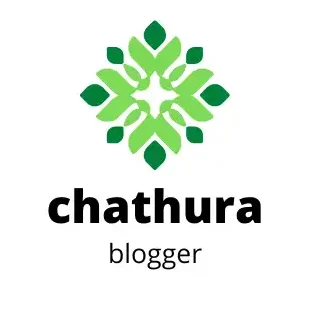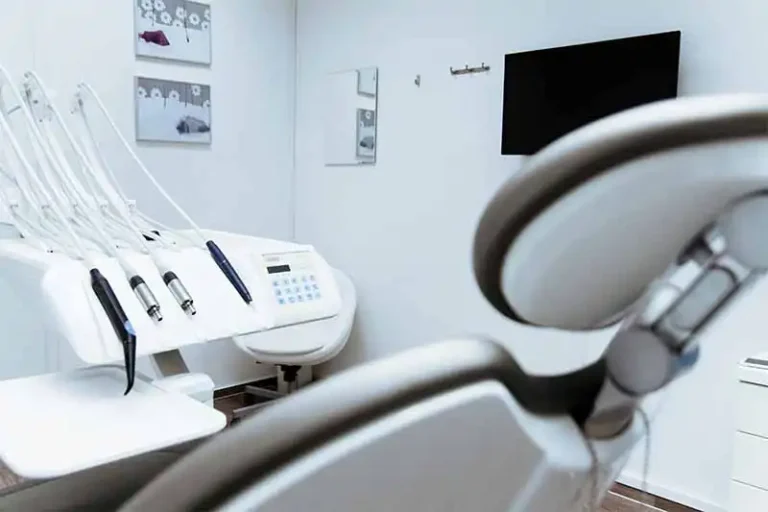Google Ads for Commercial Cleaning: Guide to Grow Your Commercial Cleaning Services
In today’s competitive marketplace, commercial cleaning businesses face the challenge of not only delivering excellent services but also ensuring a steady flow of clients.
Google Ads provides a powerful solution, enabling you to connect with businesses and property managers actively searching for cleaning services online.
If you’re looking to grow your business and reach the right audience, Google Ads is a tool you can’t afford to overlook.
With Google Ads, your cleaning services can appear at the top of search results when potential clients are searching for terms like “office cleaning services near me” or “janitorial services for businesses.”
This means you’re targeting users with high intent—people who are already interested in the services you offer.
Unlike traditional advertising methods that cast a wide net, Google Ads ensures your marketing efforts are laser-focused, reaching only those who are likely to convert into customers.
One of the standout benefits of Google Ads is its precision in targeting. You can narrow your audience based on factors such as location, keywords, and even the size or type of business you want to work with.
This makes it particularly effective for commercial cleaning businesses that operate in specific areas or specialize in certain types of cleaning, such as post-construction cleanup or medical facility cleaning.
Another advantage is the ability to measure performance in real-time. Google Ads provides detailed analytics that shows you how your campaigns are performing—how many people clicked on your ad, how many visited your website, and even how many contacted you for quotes.
This level of insight allows you to make informed decisions and adjust your campaigns to maximize results.
For commercial cleaning companies, Google Ads also offers flexibility. Whether you want to promote a limited-time discount, showcase your expertise in a specific industry, or highlight customer testimonials, you can tailor your ads to match your business goals.
Moreover, features like ad extensions let you include additional information, such as phone numbers, service areas, or links to reviews, making it easier for potential clients to trust and choose your business.
In a world where businesses are increasingly relying on online searches to find service providers,
Google Ads ensures that your commercial cleaning business is visible, credible, and ready to capture new opportunities.
It’s not just about advertising; it’s about building a connection with your ideal clients at the exact moment they need your services.
What is Google Ads?
Google Ads is a robust online advertising platform that allows businesses to reach potential customers through targeted ads displayed on Google’s search engine results pages (SERPs), YouTube, and across its vast display network.
For commercial cleaning businesses, Google Ads provides an opportunity to showcase your services to people actively searching for cleaning solutions, such as office cleaning, janitorial services, or post-construction cleanups.
The core functionality of Google Ads lies in its ability to deliver highly relevant ads based on keywords and user behavior.
For instance, if someone types “commercial cleaning services near me” into Google, your ad could appear right at the top of the search results.
This ensures your services are seen by individuals or businesses with a genuine need, making it a highly effective marketing tool.
One of the key advantages of Google Ads is its targeted approach. You can define who sees your ads by specifying factors like location, demographics, and even the type of business you want to attract.
For example, if your cleaning services cater primarily to corporate offices in a specific city, you can set your campaign to target only that audience, ensuring every dollar spent is directed at the right people.
Another significant benefit is its pay-per-click (PPC) cost structure. With PPC, you only pay when someone clicks on your ad, meaning your budget goes directly toward engaging potential clients rather than being wasted on uninterested audiences.
This cost-effective model gives you complete control over your spending, allowing you to set daily or monthly budgets that align with your financial goals.
Detailed analytics is another standout feature of Google Ads. It provides valuable insights into your campaign’s performance, such as how many people saw your ad, clicked on it, or took specific actions like visiting your website or calling your business.
This data helps you measure the return on investment (ROI) for your campaigns and make data-driven adjustments to improve results.
For example, if you notice that certain keywords perform better than others, you can allocate more budget to those terms for greater impact.
For commercial cleaning businesses, the combination of precise targeting, cost-efficiency, and measurable outcomes makes Google Ads an essential tool for driving growth.
By leveraging its features effectively, you can connect with the right clients at the right time and expand your market presence while keeping your advertising efforts both strategic and budget-friendly.
Why Use Google Ads for Commercial Cleaning?
The commercial cleaning industry is highly competitive, with countless businesses vying for the same clients in a local area.
Whether you’re targeting office buildings, medical facilities, or retail spaces, standing out from the crowd can be a challenge.
This is where Google Ads becomes a game-changer. By leveraging this powerful advertising platform, you can position your business directly in front of potential clients actively searching for cleaning services, giving you a critical edge over competitors.
One of the most significant advantages of using Google Ads for commercial cleaning businesses is its ability to target local audiences.
When someone searches for terms like “commercial cleaning services near me” or “janitorial services for small offices,” Google Ads ensures your business appears prominently in the search results.
This hyper-local targeting means your ads are reaching people who are most likely to convert into paying clients, such as nearby business owners or property managers who need reliable cleaning services.
Another key benefit is cost efficiency. Unlike traditional forms of advertising, such as billboards or newspaper ads, Google Ads operates on a pay-per-click (PPC) model.
This means you only pay when someone clicks on your ad, ensuring that your marketing budget is spent on engaging genuinely interested prospects.
Additionally, you can control your spending by setting daily budgets, which is particularly helpful for smaller cleaning businesses looking to maximize their ROI.
Google Ads is also an excellent tool for generating high-quality leads.
By using targeted keywords and creating compelling ad copy, you can attract potential clients at the exact moment they’re looking for services.
This not only increases the chances of conversions but also helps build a pipeline of leads that can turn into long-term clients.
For example, highlighting your expertise in office cleaning or showcasing customer testimonials can instill trust and make your ads more compelling.
In a crowded marketplace, Google Ads allows commercial cleaning companies to showcase their unique strengths, whether it’s offering eco-friendly cleaning solutions, competitive pricing, or 24/7 availability.
The ability to create tailored campaigns ensures that your message resonates with your ideal audience, helping you stand out and build a strong brand presence.
Ultimately, Google Ads isn’t just about advertising—it’s about creating meaningful connections with potential clients, driving consistent leads, and growing your business in a way that’s both strategic and sustainable.
For commercial cleaning companies, it’s a tool that levels the playing field, helping you compete effectively, even against larger competitors.
Getting Started with Google Ads for Commercial Cleaning
If you’re ready to take your commercial cleaning business to the next level, Google Ads is a powerful tool to attract clients and grow your reach.
However, before diving into creating your first campaign, it’s important to understand the foundational steps and the platform’s structure.
Setting Up a Google Account
The first step in using Google Ads is setting up a Google account. If you already have a Gmail account for your business, you can use that, but it’s often best to create a dedicated Google account specifically for managing your advertising campaigns.
This ensures better organization and keeps personal and business activities separate.
To set up a Google account:
- Visit Google Account Sign-Up.
- Fill in your business details, including your business name, email, and password.
- Verify your account through the provided steps.
Once your account is ready, you’ll need to access Google Ads by visiting ads.google.com. Here, you’ll create your first campaign, but before doing so, link your Google account to your business tools like Google Analytics and Google Tag Manager.
This is critical for tracking your ad performance and understanding how users interact with your website.
By integrating these tools, you gain valuable insights into clicks, conversions, and customer behaviors.
Understanding Google Ads Basics
Google Ads operates on a structured hierarchy, which can feel overwhelming at first.
However, understanding its components will make managing your campaigns much smoother.
Dashboard Layout
When you log in to Google Ads, you’ll see a clean dashboard that provides an overview of your campaigns, including metrics like impressions, clicks, and conversions.
It’s divided into sections like Campaigns, Ad Groups, Ads, and Keywords, making it easy to navigate and track performance.
Campaign Hierarchy
Google Ads is organized into three levels:
- Campaigns: This is where you define the overall goal of your ads, such as driving website traffic, generating leads, or increasing brand awareness for your cleaning services.
- Ad Groups: These are subsets of campaigns, allowing you to group similar ads together. For instance, you might have one ad group targeting office cleaning and another for post-construction cleanup.
- Ads: These are the individual pieces of content that users see, including headlines, descriptions, and display URLs.
Tools and Features
Google Ads comes with various tools to enhance your campaigns. The Keyword Planner helps you identify the most effective keywords for your commercial cleaning business, while the Audience Manager lets you define who sees your ads based on location, demographics, or interests.
Additionally, the Performance Reports provide detailed data, enabling you to tweak your strategies for better results.
By taking the time to set up your Google account properly and understanding the basics of the platform, you’ll lay the foundation for successful ad campaigns.
This groundwork is essential for creating ads that resonate with your target audience and achieve your business goals.
Creating Your First Google Ads Campaign
Launching your first Google Ads campaign can feel like a big step, but with the right approach, it becomes a powerful way to grow your commercial cleaning business.
From setting clear objectives to crafting engaging ads, each step plays a crucial role in ensuring your campaign’s success.
Campaign Objectives
The foundation of any successful Google Ads campaign is selecting the right objective. Google allows you to choose from various goals based on what you want to achieve.
For commercial cleaning businesses, common objectives include:
- Leads: Ideal if you want to generate inquiries from potential clients through phone calls, form submissions, or direct messages.
- Website Traffic: Useful for driving more visitors to your cleaning services page, where they can learn more and book your services.
- Brand Awareness: Perfect for businesses looking to establish their name in a competitive local market.
Choosing a clear objective ensures your campaign focuses on what matters most to your business, aligning your ads with measurable outcomes.
Setting Up Campaigns
When setting up your campaign, location targeting is one of the most critical steps for commercial cleaning companies.
Since your services are typically local, targeting specific geographic areas ensures your ads reach the right audience.
For example, you can target cities, zip codes, or a radius around your business location.
You’ll also need to decide which Google ad network to use:
- Search Network: Displays your ads on Google’s search results page when users search for cleaning-related keywords like “office cleaning near me” or “janitorial services for retail spaces.” This network is ideal for reaching users with high intent.
- Display Network: Places your ads on partner websites, apps, and YouTube. While this is great for increasing brand awareness, it might not generate as many immediate leads.
Defining Keywords
Keywords are the backbone of your campaign, determining when your ads appear. Start by using Google Keyword Planner to find terms relevant to your business.
Focus on keywords that potential clients might search for, such as “commercial cleaning services,” “office janitorial services,” or “post-construction cleanup.”
To optimize your campaign, it’s essential to balance the use of different match types:
- Broad Match: Captures a wide audience by including searches related to your keywords. For example, “cleaning services” might trigger ads for “cleaning companies for offices.”
- Phrase Match: Targets searches that include your exact keyword phrase. For instance, “commercial cleaning services near me” triggers ads when that phrase appears in the search query.
- Exact Match: Ensures your ad shows only when the exact keyword is searched, providing precise targeting but a smaller reach.
By carefully selecting and mixing these match types, you can balance visibility and relevance.
Crafting Engaging Ads
Your ad copy is what captures the attention of potential clients and convinces them to choose your services.
To create engaging ads, focus on clear, compelling, and actionable language.
Here’s an example of effective ad copy:
- Headline: “Reliable Office Cleaning Services – Book Today!”
- Description: “Keep your workspace spotless with professional cleaning tailored to your needs. Affordable rates and flexible schedules. Contact us now!”
- Call-to-Action (CTA): “Get a Free Quote!”
Strong headlines grab attention, while descriptive text highlights your unique value, such as affordability, flexibility, or specialized cleaning expertise.
Always include a clear CTA that tells users what to do next, like calling, clicking, or booking online.
By aligning your campaign objectives, targeting the right audience, using strategic keywords, and crafting irresistible ads, you can set your commercial cleaning business up for success with Google Ads.
Understanding Ad Features
Google Ads offers a range of features that help your commercial cleaning business stand out, target the right audience, and increase conversions.
Let’s break down these essential tools and how to use them effectively in your campaigns.
What are Ad Groups?
Ad groups are an organizational structure within your Google Ads campaigns. Think of them as a way to group related ads and keywords together based on a specific theme or service you’re promoting.
For instance, if you offer office cleaning and retail space cleaning, you can create separate ad groups for each.
By grouping similar ads and keywords, ad groups help:
- Improve Relevance: Ads within an ad group closely match the search intent of the keywords, making them more appealing to users.
- Streamline Management: You can tailor ads and keywords for specific services, making it easier to optimize and analyze performance.
For example, an ad group for “office cleaning” might include keywords like “office janitorial services” and “commercial office cleaning,” paired with ads highlighting office-specific benefits.
What are Google Ads Keyword Match Types?
Keyword match types determine how closely a user’s search query needs to match your chosen keywords for your ad to appear.
Using these strategically can maximize your campaign’s efficiency:
- Broad Match: Reaches the widest audience by triggering ads for searches related to your keywords. For example, “cleaning services” could match searches like “best cleaning companies.” It’s useful for visibility but may attract less-qualified leads.
- Phrase Match: Targets queries that include your exact keyword phrase in the search. For instance, “commercial cleaning services near me” ensures your ad shows for searches containing that phrase.
- Exact Match: Limits your ads to exact or very close variations of your keyword. For example, “retail cleaning services” would only trigger ads for that precise term. This provides the highest relevance but with a smaller audience.
Balancing these match types ensures your ads reach a broader audience while staying relevant to high-intent searches.
Using Ad Extensions
Ad extensions are additional elements you can add to your ads to provide more information and increase engagement.
For commercial cleaning services, they can significantly enhance ad performance:
- Sitelinks: These are clickable links below your ad that direct users to specific pages, such as “Book a Cleaning,” “Service Pricing,” or “Customer Testimonials.”
- Callouts: Short snippets of text that highlight key benefits like “Eco-Friendly Cleaning” or “24/7 Availability.”
- Structured Snippets: Allow you to showcase specific aspects of your services, such as “Services: Office Cleaning, Retail Cleaning, Post-Construction Cleanup.”
These extensions make your ad more informative and engaging, helping users take action faster.
Importance of Landing Pages
Your landing page is where potential clients land after clicking your ad, making it a critical part of converting clicks into leads.
A poorly designed landing page can drive users away, no matter how good your ad is.
To create an effective landing page tailored for cleaning services:
- Clear and Direct Call-to-Action (CTA): Use CTAs like “Get a Free Quote” or “Book a Cleaning Today” prominently on the page.
- Showcase Testimonials: Include reviews from satisfied clients to build trust and credibility.
- Detail Your Services: Clearly outline the services you offer, such as office cleaning, window cleaning, or post-construction cleanup.
- Use Professional Design: Keep the layout clean and visually appealing, with a focus on easy navigation and quick loading times.
A well-optimized landing page not only captures leads but also reinforces the professionalism and quality of your cleaning business, ensuring a positive user experience from click to conversion.
By understanding these ad features and applying them strategically, your Google Ads campaigns can become a powerful tool to grow your commercial cleaning business and stay ahead in the competitive market.
Managing Budget and Bidding
Effectively managing your budget and choosing the right bidding strategy are critical aspects of running successful Google Ads campaigns for commercial cleaning services.
These steps ensure you make the most of your ad spend while maximizing your reach and conversions.
Setting a Budget
Allocating a realistic budget is one of the first decisions you’ll make when setting up your Google Ads campaign.
Your budget determines how often your ads are shown and how many potential clients you can reach.
Start by researching the average cost-per-click (CPC) for cleaning service-related keywords in your target area.
This can give you a baseline for estimating the budget needed to generate meaningful results.
If you’re just beginning, it’s wise to start with a modest budget and scale up as you see positive outcomes.
Google Ads allows you to set budgets in two key ways:
- Daily Budget: This sets a cap on how much you’re willing to spend per day on a campaign. For example, if your daily budget is $20, Google will optimize your ad delivery to stay within that limit.
- Campaign-Level Budget: This option spreads your total budget across the campaign duration, ensuring consistent spending over time.
For commercial cleaning services, it’s essential to consider the size of your target audience and the competition level in your service area.
Allocating a higher budget to high-converting campaigns—such as those focused on lead generation—can yield better ROI.
Choosing a Bidding Strategy
Bidding determines how you pay for your ads and what goals you prioritize.
Google Ads offers several bidding strategies, each tailored to different campaign objectives:
- Cost-Per-Click (CPC): You pay only when someone clicks on your ad. This is ideal for driving traffic to your website or landing page.
- Cost-Per-Thousand Impressions (CPM): You pay for every 1,000 times your ad is shown, regardless of clicks. This is useful for building brand awareness.
- Cost-Per-Acquisition (CPA): You pay for each conversion, such as a form submission or a call. CPA is an advanced strategy often used once you have enough data to optimize for conversions.
For beginners in the commercial cleaning niche, Manual CPC or Enhanced CPC (which adjusts bids to increase the likelihood of conversions) are great starting points.
These options give you control while allowing Google’s algorithms to assist with optimization.
Experienced advertisers may benefit from Target CPA or Maximize Conversions strategies, which rely on historical performance data to automate bidding for better results.
It’s crucial to monitor your campaigns regularly to adjust your budget and bidding strategy based on performance.
For instance, if a campaign targeting office cleaning clients generates consistent leads, consider increasing its budget or testing a CPA strategy for better efficiency.
By thoughtfully managing your budget and choosing the right bidding strategy, you ensure your Google Ads campaigns are cost-effective and deliver results that align with your business goals.
Optimizing and Monitoring Your Campaign
Once your Google Ads campaign for commercial cleaning is live, the real work begins—optimization and monitoring.
Continuous improvements based on data insights are vital to maximizing your return on investment and maintaining an edge in a competitive market.
Reviewing Campaign Performance
Monitoring performance metrics is the cornerstone of effective campaign management. Key metrics to track include:
- Click-Through Rate (CTR): This measures the percentage of users who clicked your ad after seeing it. A high CTR indicates that your ad copy and targeting are resonating with your audience.
- Conversion Rate: This tracks how many ad clicks result in desired actions, such as booking a service or filling out a contact form.
- Cost Per Lead (CPL): Understanding how much each lead costs ensures that your campaign remains financially viable.
You can monitor these metrics using Google Ads’ built-in dashboard, which provides a clear overview of campaign performance.
Additionally, Google Analytics can help track user behavior on your website or landing page, offering deeper insights into how visitors interact with your services.
A/B Testing
A/B testing, also known as split testing, is an essential technique for optimizing your ads. By comparing different versions of your ads, you can identify what resonates best with your target audience.
For example, you might test two variations of ad copy:
- Version A focuses on “Affordable Office Cleaning Services.”
- Version B highlights “Reliable and Eco-Friendly Cleaning Solutions.”
Similarly, you can test different headlines, images, or call-to-action (CTA) phrases. A/B testing extends to keywords and landing pages as well.
Over time, these tests reveal the combination of elements that delivers the best results for your commercial cleaning business.
Adjusting Campaigns
Optimization is a continuous process. As your campaign runs, review the performance data and make informed adjustments to improve efficiency:
- Refine Targeting: Narrow your location targeting or audience demographics if some areas or groups perform better than others.
- Adjust Bids: Increase bids on high-performing keywords to capture more traffic while reducing spend on underperforming ones.
- Update Ad Copy: Refresh your ad content periodically to avoid ad fatigue, where repeated exposure reduces effectiveness.
Another critical optimization technique is the use of negative keywords. Negative keywords prevent your ad from appearing in irrelevant searches.
For example, if you only provide commercial cleaning, adding “home cleaning” as a negative keyword ensures your ad isn’t shown to users searching for residential services.
By consistently reviewing, testing, and refining your campaign, you can reduce wasted ad spend, generate more qualified leads, and build long-term success in the competitive commercial cleaning industry.
Advanced Tips for Commercial Cleaning Ads
When you’ve mastered the basics of Google Ads for your commercial cleaning business, you can take your campaigns to the next level with advanced strategies.
These techniques will help you refine your targeting, improve your ad relevance, and reach more high-quality leads.
Let’s dive into some of the most effective advanced strategies that can make a significant difference in your Google Ads performance.
Local Service Ads and Geofencing
Local Service Ads (LSAs) are a great option for commercial cleaning businesses, especially if you want to be visible in the “local pack” at the top of Google search results.
These ads are designed for service-based businesses and display when users search for cleaning services in your area.
Unlike traditional Google Ads, Local Service Ads let you advertise your business with a simple “call” button, so potential clients can immediately reach you.
What’s more, you only pay for leads, not clicks, which can make this option more cost-effective.
Geofencing is another powerful local targeting tool. It uses GPS or RFID to create a virtual boundary around a specific geographic area, triggering your ads when users enter that zone.
For example, if you provide cleaning services for office buildings, you could set up geofencing around commercial districts or business hubs.
When people in those areas search for cleaning services, your ad will appear, increasing the chances of converting local prospects who are ready to hire.
By combining Local Service Ads with geofencing, you can maximize your visibility and attract more local leads actively searching for commercial cleaning services in your area.
Remarketing Strategies to Target Potential Leads
Remarketing is a highly effective strategy for re-engaging visitors who have previously interacted with your website or ads but did not convert.
This technique allows you to show targeted ads to users who have shown an interest in your cleaning services, such as those who visited your site or clicked on your ad without filling out a contact form or booking a service.
For commercial cleaning businesses, remarketing is a game-changer because it keeps your services top of mind for potential clients who are still in the decision-making process.
You can create tailored ads to encourage them to take action, such as offering a limited-time discount or showcasing testimonials from satisfied clients.
Remarketing helps ensure you’re not losing valuable leads who have already expressed interest in your services but need an extra nudge to take the final step.
In addition, you can segment your remarketing campaigns to focus on specific behaviors.
For instance, you might target users who visited your “office cleaning” page but didn’t inquire about your services, or people who viewed your testimonials but didn’t take action.
By personalizing your approach, you can increase the likelihood of turning these leads into actual customers.
By leveraging local service ads, geofencing, and remarketing, you can make your Google Ads campaigns more efficient and effective, helping your commercial cleaning business reach the right audience and stay top of mind.
These advanced strategies will elevate your marketing efforts, drive more qualified leads, and ultimately help you grow your business.
Common Mistakes to Avoid in Google Ads for Commercial Cleaning
Running Google Ads for your commercial cleaning business can be incredibly effective, but there are several common pitfalls to watch out for that could waste your budget and impact your results.
By understanding these mistakes, you can refine your strategy and avoid costly errors.
Poor Keyword Targeting
Selecting the wrong keywords can lead to irrelevant traffic and wasted ad spend.
For example, using overly broad keywords like “cleaning” or “services” might bring in visitors who are not looking for commercial cleaning specifically.
It’s crucial to focus on more specific terms related to the commercial cleaning industry, such as “office cleaning services” or “janitorial cleaning for businesses.”
Tools like Google Keyword Planner can help you identify the most effective keywords for your services.
Low Quality Landing Pages
If your landing page doesn’t align with the ad content or fails to provide a clear call to action, visitors are less likely to convert into leads.
Make sure your landing page is optimized for commercial cleaning services, with concise information about your offerings, customer testimonials, and an easy way for potential clients to contact you.
A slow-loading or confusing landing page can frustrate potential clients and cause them to click away, wasting your ad spend.
Overly Bidding
While it’s important to bid competitively, going too high on your bids can make your campaign unsustainable.
Instead, focus on maximizing your return on investment (ROI) by starting with reasonable bids, and use Google Ads’ smart bidding options to let the system optimize your budget based on performance.
Carefully monitor your campaign and adjust bids based on performance to ensure you’re getting the most value out of every dollar spent.
FAQs About Google Ads for Commercial Cleaning
How much should I spend on Google Ads for commercial cleaning?
The amount you should spend on Google Ads depends on several factors, such as the competition in your area, the size of your target market, and the services you offer.
A good starting point is to set a daily budget that aligns with your goals and the cost per click (CPC) in your industry.
For example, commercial cleaning services might see CPCs ranging from $1 to $5, depending on the location.
It’s a good idea to start small and adjust your budget based on the performance and results you see over time.
What keywords work best for commercial cleaning?
Effective keywords for commercial cleaning businesses should be specific and location-based.
Terms like “office cleaning near me,” “commercial janitorial services,” and “business cleaning services” tend to attract the right audience.
Including terms related to the type of cleaning services you provide, such as “carpet cleaning,” “disinfection services,” or “post-construction cleaning,” can help you refine your targeting.
Be sure to use a mix of exact match, phrase match, and broad match keywords to balance reach and relevance.
How can I improve my click-through rate (CTR)?
Improving your CTR for commercial cleaning ads involves crafting compelling ad copy that resonates with your audience.
Use attention-grabbing headlines and include clear calls to action, such as “Get a Free Estimate” or “Call Now for Cleaning Services.”
Highlighting key benefits, such as “Eco-Friendly Cleaning” or “Satisfaction Guaranteed,” can also attract more clicks.
A relevant, well-designed landing page that matches the ad content can improve the user experience and increase CTR.
What is the best bidding strategy for cleaning services?
For most commercial cleaning businesses, cost-per-click (CPC) bidding is a solid choice because it allows you to pay only when someone clicks on your ad.
However, if you’re focusing on generating conversions, cost-per-acquisition (CPA) bidding can help Google optimize your campaign for the best-performing leads.
If you’re new to Google Ads, start with manual CPC bidding to gain more control over your budget and bids, then switch to automated bidding once you have a better understanding of your campaign’s performance.







